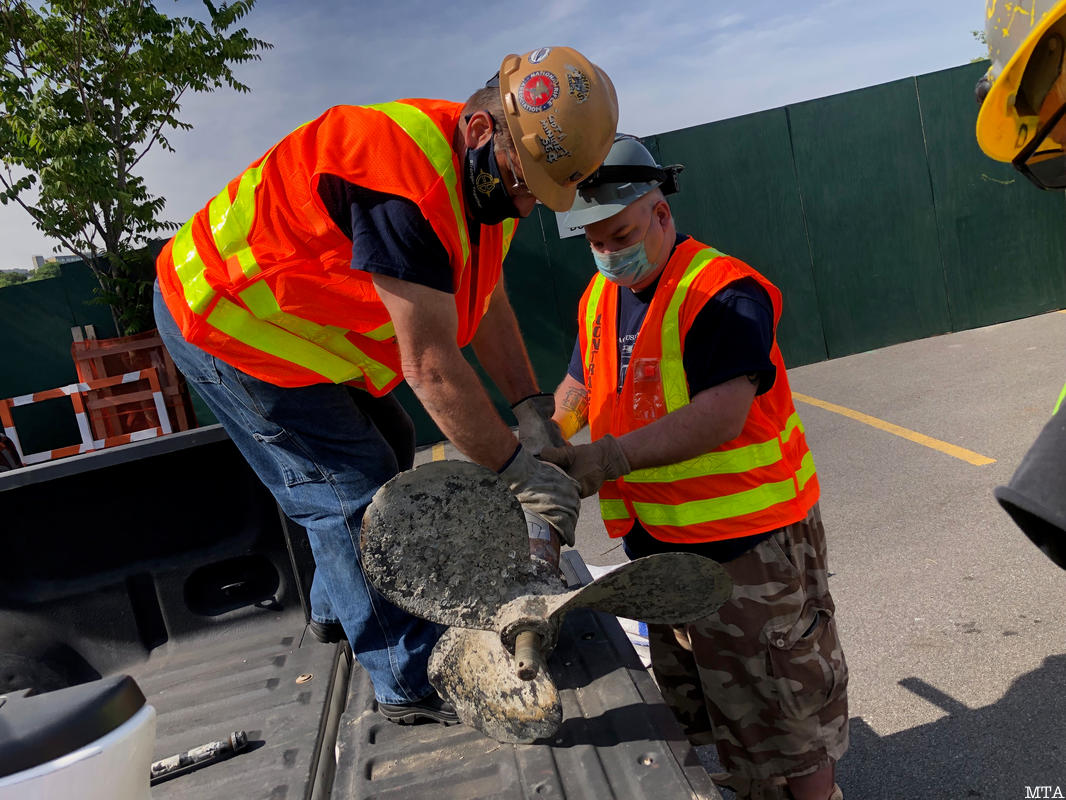The North Cove along the Harlem River is a natural inlet in Manhattan’s Inwood neighborhood that has recently seen restoration efforts after years of glass and trash pollution. The cove was not accessible until recent years, and few New Yorkers even know it exists. Even more incredibly, sunk below the water was a historic vessel believed to be the PT-59, a Navy vessel commanded by John F. Kennedy during World War II. Recently, the Metropolitan Transportation Authority organized a recovery effort to unearth the boat as part of the construction for a new sea wall in front of the 207th Street Rail Yard.
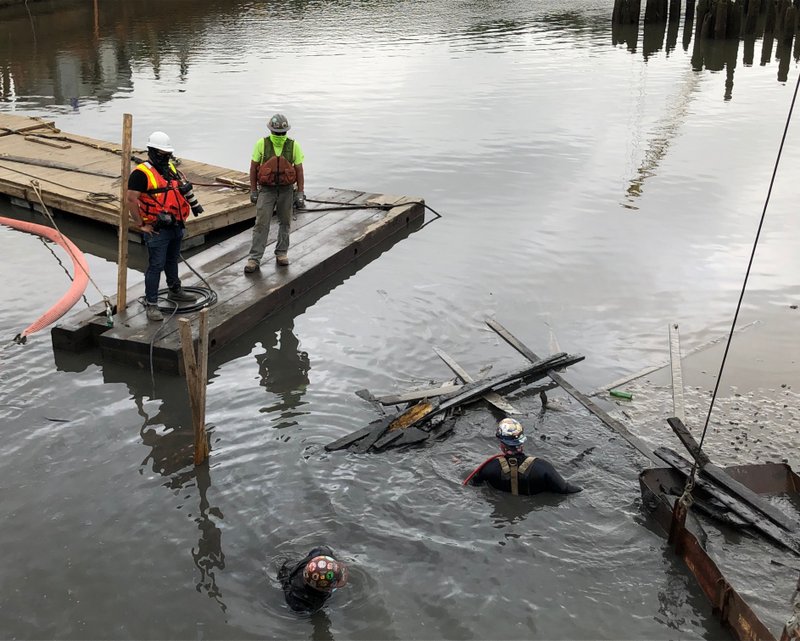 Photo courtesy Metropolitan Transportation Authority.
Photo courtesy Metropolitan Transportation Authority.
The PT-59 is an S-Class Patrol Torpedo boat launched in 1941, built by the Electric Launch Company of Bayonne, New Jersey. The PT-59 was first assigned to a training squadron in Melville, Rhode Island, and in April 1942 it accidentally fired a torpedo at the USS Capella, causing eight injuries. It was then reassigned to guard the Panama Canal, and later that year it arrived at the Solomon Islands, where it sank a Japanese submarine.
Lieutenant John F. Kennedy took control of the PT-59 in 1943, and he supervised the ship’s conversion into a gunboat after having all four torpedo tubes removed. Kennedy had earlier served as commander of the PT-109, which was rammed and sunk by the Japanese destroyer Amagiri on August 2, 1943. Kennedy’s service on the PT-59 remains rather obscure compared to his adventures on the PT-109, which was much larger and required a larger crew to operate.
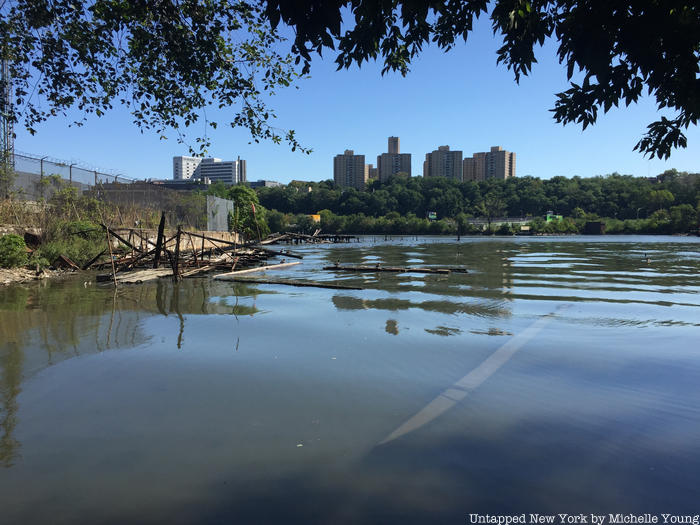 The PT-59 was underwater in the North Cove area off Inwood, after sinking off an abandoned pier.
The PT-59 was underwater in the North Cove area off Inwood, after sinking off an abandoned pier.
“John F. Kennedy was elected to the Congress, the Senate and the Presidency, mostly because he was a war hero,” historian William Doyle, author of PT 109, told Untapped New York, “The war hero story of PT-109 was immortalized in a New Yorker magazine article from 1944 that originated in the Stork Club in New York City when Kennedy ran into a magazine writer… So in the three key elections that John Kennedy had, Joe Kennedy, the old man, financed massive reproductions of the article to be stuffed into ballot boxes as a marketing tool. ”
Yet, PT-59 played a significant role in Operation Blissful, a raid on Choiseul Island in the Solomon Islands. Kennedy attacked Japanese barges by Choiseul Island’s Warrior River, and while commanding the boat, he rescued 10 trapped Marines by serving them canned peaches. One of the Marines, Corporal Schnell, died in Kennedy’s bunk that night. “That’s an extraordinary story of heroism, even more extraordinary because Kennedy almost never talked about it,” Doyle says. “He did not put in for a medal, he did not campaign on it, he almost never talked about it again.”
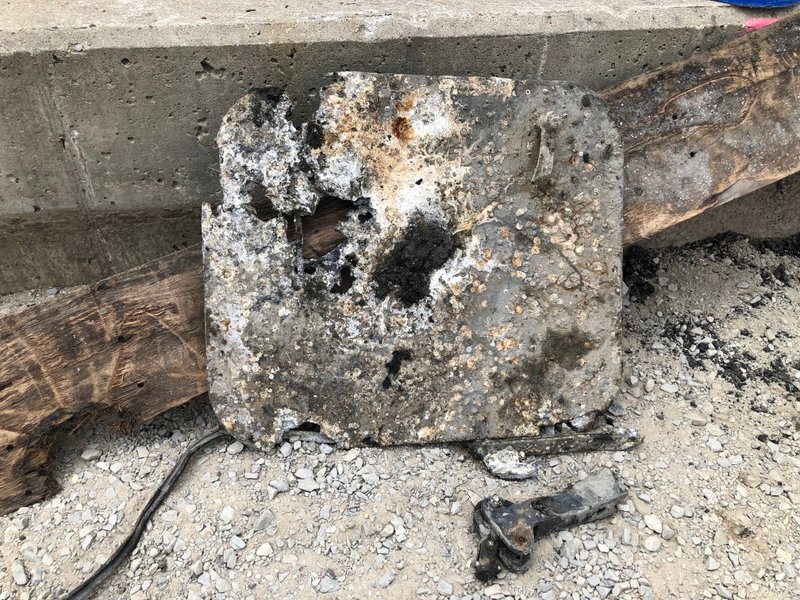 A piece of the boat that was unearthed. Photo courtesy Metropolitan Transportation Authority.
A piece of the boat that was unearthed. Photo courtesy Metropolitan Transportation Authority.
A decade later, the PT-59 operated as a charter boat in New York City, renamed the Sun Tan and then the Sea Queen V. It was later damaged by fire and the diesel engines removed. In 1970 Redmond Burke, an English teacher at Bronx Community College, bought it for $1,000 as a houseboat. He lived on the boat for a few years in North Cove on an abandoned dock. He confirmed with the Coast Guard that the hull number, 274398, was that of the PT-59, and a student of his made the connection to Kennedy. Yet, few people and historical groups were interested in taking the vessel. By the mid-70s, Burke moved on and the boat sank to the bottom of the Harlem River. Many people thought that the Army Corps of Engineers cleared the boat from the waters, yet much of the boat’s remains were still at the bottom of the mud.
In May 2017, Doyle announced there was a strong possibility that PT-59 could be recovered. After befriending amateur PT boat historians, Doyle was alerted that the PT-59 was in the general location of North Cove, and Doyle performed a visual analysis of the cove and compared it to a photograph from the 1970s of the PT-59 in the cove. Additionally, he knew that the PT-59 was a 77-foot boat, and when looking on Google Images from the 2000s, he could see the shadow of an object that was also the same length. Doyle took a piece of the boat from the wreckage and sent it to two laboratories, and both concluded that the piece was made of spruce, commonly used in sections of PT boats. He tells us that he almost sank in quicksand during his investigation!
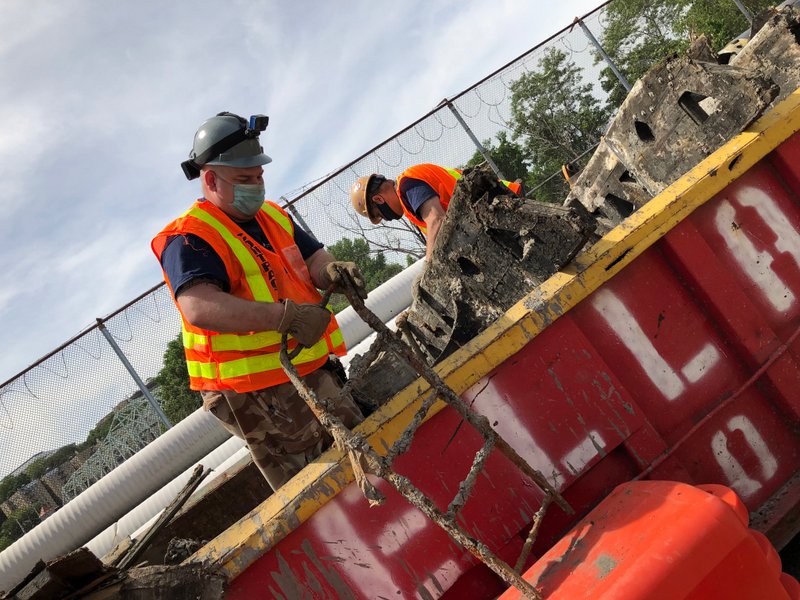 Photo courtesy Metropolitan Transportation Authority.
Photo courtesy Metropolitan Transportation Authority.
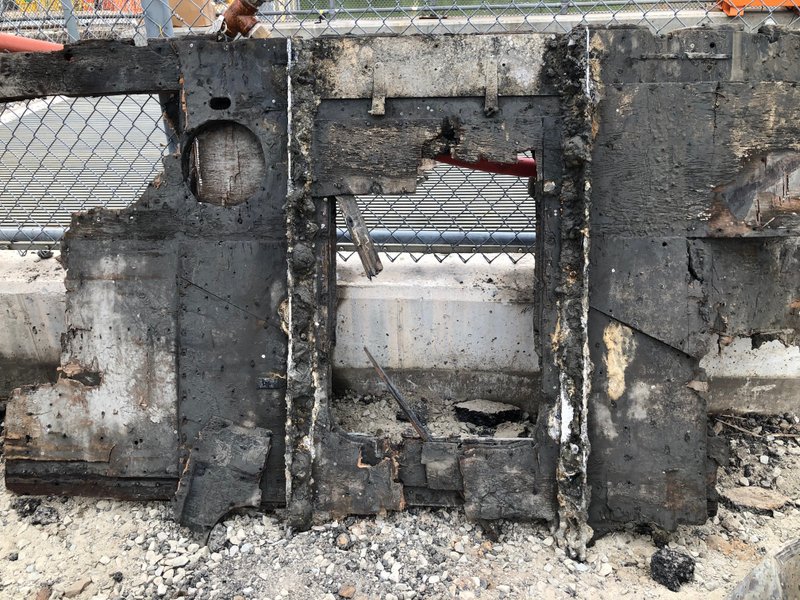 A piece of the boat that was unearthed. Photo courtesy Metropolitan Transportation Authority.
A piece of the boat that was unearthed. Photo courtesy Metropolitan Transportation Authority.
In late May, the MTA organized excavation efforts to unearth the remains of the boat, using divers and a crane to carefully take pieces out of the water. “We decided to take the extra care, and to make sure we removed it properly and put things aside and get in touch with anyone who might want it,” said Meredith Daniels, an M.T.A. spokesperson. The boat’s pieces were then taken to Battleship Cove, a museum in Fall River, Massachusetts, where historians are analyzing each piece of the boat.
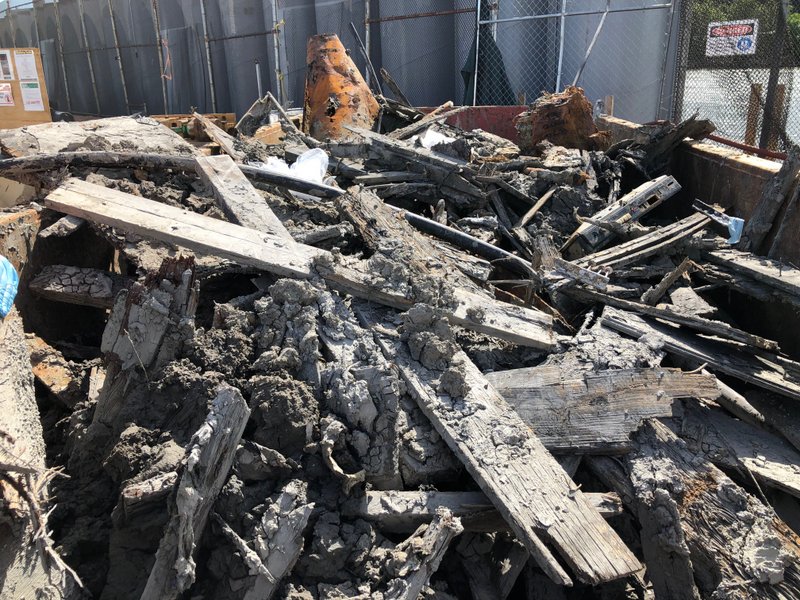 All of the materials that were recovered. Photo courtesy Metropolitan Transportation Authority.
All of the materials that were recovered. Photo courtesy Metropolitan Transportation Authority.
“I still reserved 1% doubt, and to tell you the truth, I still reserve 1% doubt because what I haven’t heard yet is that Battleship Cove is going through all the pieces and until they find a precise serial number or markings on the metal pieces of the wreckage that correspond with the 1941 construction of the PT-59, I’ll reserve that 1% doubt,” Doyle tells us.
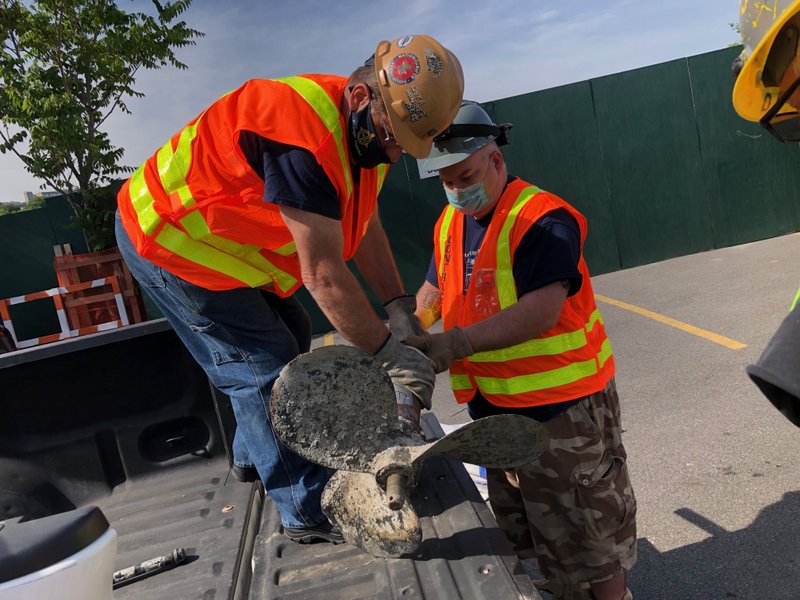 Photo courtesy Metropolitan Transportation Authority.
Photo courtesy Metropolitan Transportation Authority.
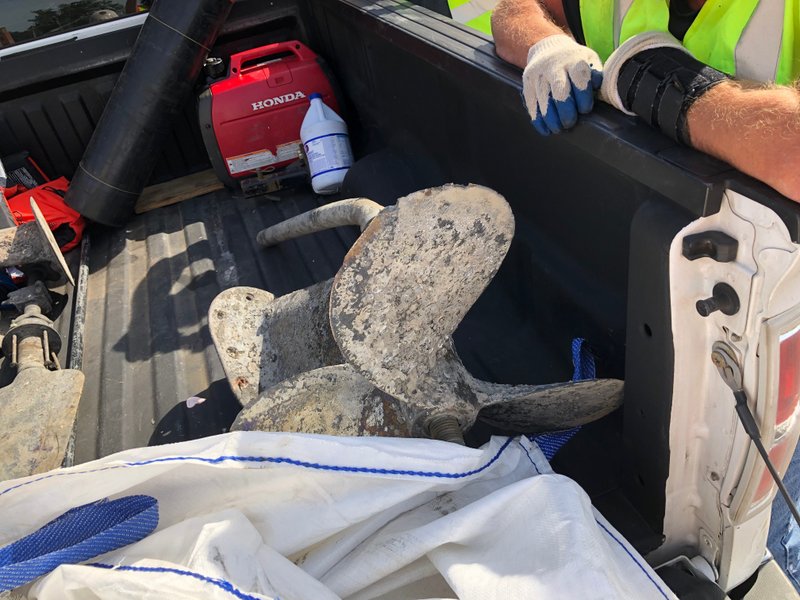 Photo courtesy Metropolitan Transportation Authority.
Photo courtesy Metropolitan Transportation Authority.
“What a strange patch of New York, that spot is not only godforsaken and kind of hellish when you go there on a gray, overcast day, but it’s also very dangerous and that’s why what the MTA did was so extraordinary,” Doyle says. “They had real divers and they built elaborate construction set up to recover a lot of the material including a good piece of the rear of the engine room itself, the engine bed.”
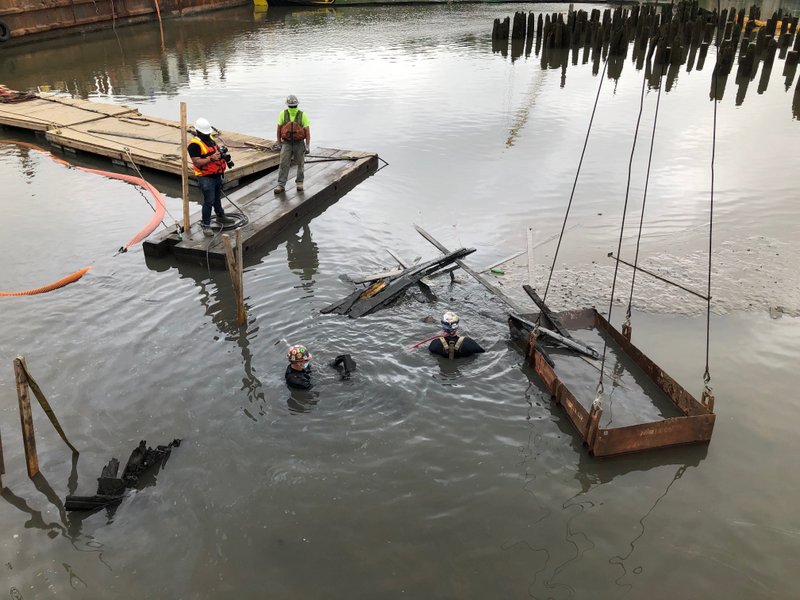 Photo courtesy Metropolitan Transportation Authority.
Photo courtesy Metropolitan Transportation Authority.
The MTA is currently building a $610 million sea wall along the west side of the Harlem River to prevent flooding of the 207th Street train yard. The yard, which was damaged in Superstorm Sandy, is the main storage and repair facility for the rolling stock on the “A” and “C” Subway lines and houses a train overhaul shop, inspection shop, car wash, power substations and signal towers lines.
Doyle thinks that the discovery of the PT-59 is a “truly bizarre” yet full-circle discovery, since the Kennedy family has a long history in New York City. JFK attended Riverdale Country School for a few years, and his father ran his business empire on 42nd Street, Rockefeller Center, and the Plaza Hotel. After he was elected as President, JFK came to New York and set up his first pre-White House operations in the Carlyle Hotel. “I think it’s a rather beautiful reflection of John F. Kennedy’s often forgotten, or little appreciated, New York roots,” Doyle said.
Next, check out The Abandoned Kings Park Psychiatric Center: A Visual Journey After Deinstitutionalization.






